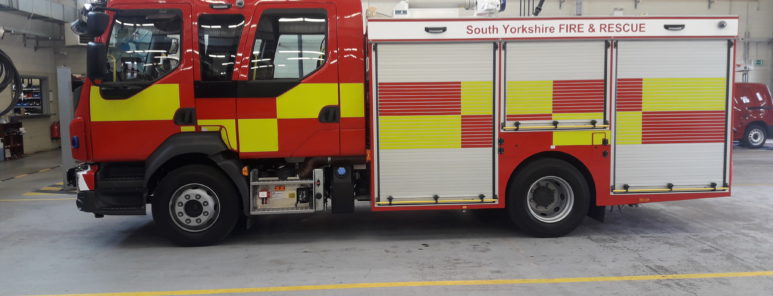A new, smaller fire engine will soon be responding to 999 calls for the very first time.
South Yorkshire Fire & Rescue has spent more than a year working with contractors at Angloco Limited to develop a lighter, more agile fire appliance to attend incidents across the county. The appliance has been designed to keep the same functionality as a traditional fire engine, but to be easier to manoeuvre than the current larger appliances.
The smaller appliance will be able to respond to a wide range of incidents from grass and rubbish fires to large scale building fires and road traffic collisions. The engine will be staffed in the same way as the other fire engines already used by the service.
The appliance will carry all of the necessary equipment required to attend an incident, including two 22mm high pressure hose reels as well as a 10.5m triple extension ladder. Just like the larger appliances in use, there will also be four sets of breathing apparatus stowed in the vehicle.
It is estimated that the new smaller appliance is saving the service around £120,000 in running costs over its lifetime and is roughly £20,000 cheaper than the larger fire appliances.
Before going ‘on the run’, the vehicle will undergo a period of testing and evaluation on station with crews to identify any minor changes which need to be made. Training requirements will also be identified for the firefighters who will be driving the appliance.
Assistant Chief Fire Officer, Tony Carlin said: “This next generation appliance has been designed using the expertise and knowledge of a number of firefighters and officers and we are very excited to be welcoming it into our service.
“We want to provide our staff with the best available equipment to be able to carry out their work and these new vehicles will give us a much more dynamic emergency response fleet. Not only this, but these vehicles cost the service less to buy and run, making the money of the people we serve go further.”
The fire engine will be initially attending emergency calls in Sheffield and Doncaster, where it will spend three months at each station. After this six month period, the service will collate any feedback from firefighters to make any required improvements before placing an order for several more.

